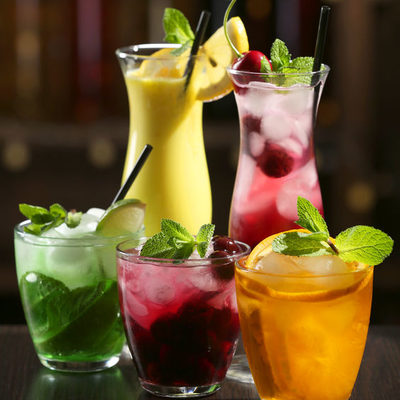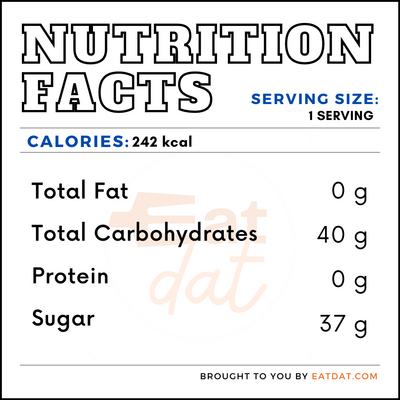
Cocktail
What is a Cocktail?
A cocktail is an alcoholic drink that can be made of liquor, liqueurs, syrup, fruit juice, or other ingredients. There are many variations of this beverage and the flavors vary according to the ingredients used. The International Bartenders Association has three categories for cocktails:
- Unforgettables
- Contemporary Classics
- New Era Drinks.
According to The Nielsen Company, the top 5 most ordered cocktails in the US are:
- Margarita
- Martini
- Old Fashioned
- Mimosa
- Moscow Mule
In the US, these alcoholic beverages have their own culture which pushes the spirits market to increase by 2.2% annually. Every year, people across the globe celebrate World Cocktail Day on May 13th.
Origin of cocktails
While the history of the word “cocktail” has been linked to several languages and cultures, the jury is still out on the exact origin. Mixing alcohol with other ingredients is a practice that likely began with British punches in the 18th century. These beverages were made in giant bowls where people combined spirits, fruit juices, spices, and more. A paper in the UK made the first reference to a “cock-tail” in 1798 and an American publication followed suit in 1803.
Cocktails and their ingredients evolved from sweet and citrus flavors and by 1828 included ginger and pepper. Bartenders became more creative and continued to experiment with more unique combinations to develop new drinks. In 1862, Jerry Thomas released the first book ever written on cocktails called How to Mix Drinks or The Bon Vivant’s Companion. During the American Prohibition era, bartenders became even more creative to make up for the poor quality of alcohol produced at the time. Cocktails survived, surging in popularity after the 18th amendment was repealed, and remain beloved to this day.
Nutrition
These alcoholic beverages are usually crafted with liquor, liqueurs, syrups, and various types of alcohol. While the nutrition of each cocktail will vary according to their ingredients, most alcoholic drinks are high in sugar and salt. A mojito can have:

If paired with diet and exercise, cocktails can be enjoyed in moderation. Of course, all alcoholic beverages should be consumed responsibly.
Commercial production
Pre-batched cocktails contain the essence of the drink such as ice or bitters but simplify the process for bar staff. Although these batches are not suitable for all cocktails, drinks such as an Old Fashioned, Negroni, or Manhattan work well. Commercially produced batches combine the basic ingredients of the drink and add water to mimic melted ice. The blends are bottled, labeled, and refrigerated before being shipped off to bars or restaurants.
Uses
Cocktails can turn any event into a party. However, these beverages will be best enjoyed when their ingredients are fresh and flavorful. To ensure you have a tasty cocktail, you need to properly store all ingredients. Hard liquor should be kept in an airtight container away from light. Once opened, it’s best to consume liquor within 9 months.
Unopened bottles of liqueur can last 3-4 years, but once they’re opened you should monitor their flavor and quality. Cream liqueurs are safe for 6 months, but the shelf life of other liqueurs depends on their alcohol content. Liqueurs over 20% ABV should be consumed within 9 months of opening. Those below 20% ABV will taste best when consumed within 2-3 months of opening.
Cocktail recipes
There are cocktails crafted to suit every palate. Here are some popular recipes.
FDA Regulation
The Food & Drug Administration regulates cocktail mixes and the food additive ingredients used to make them. The FDA deems food additives as safe for use and lists all foods they are appropriate for in Title 21 part 170.3. Another regulation gives the standard of identity for mica which is used to create food additives that color cocktail mixes. It goes on to outline the parts per million of substances such as lead, arsenic, and mercury allowed in food color additives. Companies using these additives must still follow the strict labeling regulations for these cocktail mixes.
The Alcohol and Tobacco Tax and Trade Bureau (TTB) is the governing body which oversees and regulates hard liquor and spirits. Their standard of identity for alcohol is “Spirits distilled from any material at or above 95% alcohol by volume (190 proof), and if bottled, bottled at not less than 40% alcohol by volume (80 proof)”. There are further subcategories which include “Whisky”, “Gin”, “Rum”, etc.
References
“A (Brief) History Of The Cocktail.” Vinepair.com, Vinepair, vinepair.com/spirits-101/history-of-the-cocktail/.
“The History of Cocktails.” Bundaberg.com, Bundaberg Brewed Drinks, 17 Mar. 2019, www.bundaberg.com/en-us/the-history-of-cocktails/.
Graham, Colleen. “How Did the Cocktail Get Its Name?” Thespruceeats.com, The Spruce Eats, 16 Jan. 2020, www.thespruceeats.com/what-is-a-cocktail-760163.
“CFR – Code of Federal Regulations Title 21.” Accessdata.fda.gov, U.S. Food & Drug Administration, 1 Apr. 2019, www.accessdata.fda.gov/scripts/cdrh/cfdocs/cfcfr/CFRSearch.cfm?fr=170.3.
